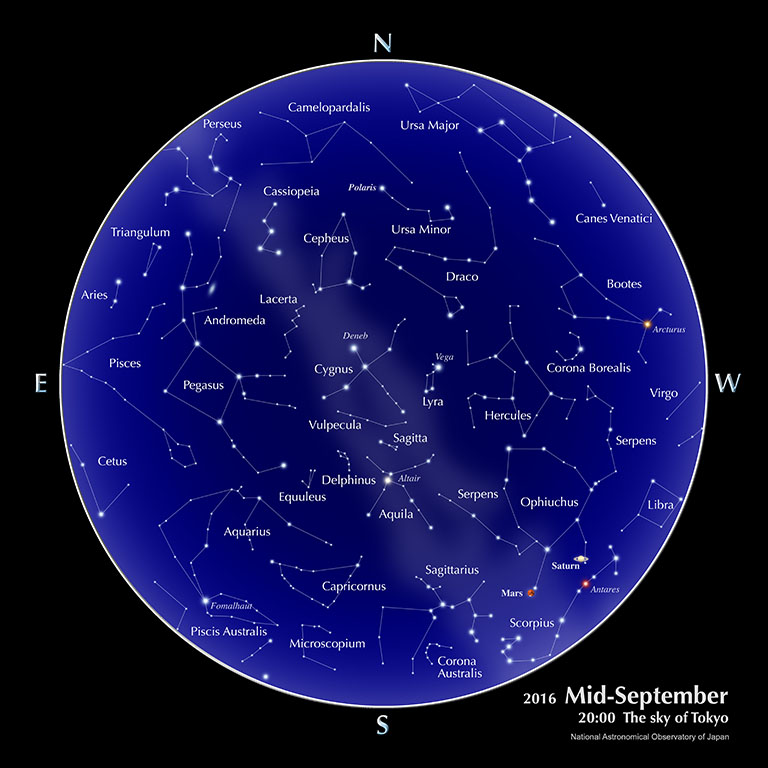Astronomical Information | 2016 | September
The sky of Tokyo

Calendar (September)
| 1 | Annular solar eclipse (not visible from Japan) Reference: Local Prediction of the Solar Eclipse / New Moon |
| 3 | Neptune at opposition |
| 9 | First Quarter Moon |
| 13 | Mercury at inferior conjunction |
| 15 | Harvest Moon |
| 17 | Full Moon |
| 19 | Respect-for-the-Aged Day [Keiro-no-hi ](national holiday) |
| 21 | Mercury at stationary point |
| 22 | Autumnal Equinox Day / Autumn equinox (Sun’s ecliptic longitude 180°) |
| 23 | Last Quarter Moon |
| 26 | Jupiter at conjunction |
| 29 | Greatest Western Elongation of Mercury |
Planets
- Mercury
- Mercury reaches inferior conjunction on the 13th. From the beginning to the middle of the month, its apparent location is close to the Sun, making it unsuited for observations. At the end of the month, Mercury starts to appear low in the eastern sky before sunrise, and it reaches its greatest western elongation on the 29th. From September 26 to October 2, its elevation as seen from Tokyo exceeds 10 degrees at 30 minutes before sunrise. At this time, Mercury’s brightness is 0.0 magnitude to -0.8 magnitude.
- Venus
- Venus is located low in the western sky after sunset, but its apparent location is close to the Sun, making it unsuited for observations.
- Mars
- Mars can be seen in the southwestern evening sky moving from the constellation Scorpio to the constellations Ophiuchus and Sagittarius. Its brightness is -0.3 magnitude to 0.1 magnitude.
- Jupiter
- Jupiter’s apparent location is close to the Sun, making it unsuited for observations. It reaches conjunction on the 26th.
- Saturn
- Located in the constellation Ophiuchus, Saturn can be seen in the southwestern evening sky. Its brightness is 0.5 magnitude.
Source: Ephemeris Computation Office, NAOJ
With the “Sky Viewer” you can easily explore the appearance of a typical urban night sky (planets and constellations are visible).The Celestial Phenomena section of the glossary explains the planetary phenomena terms: greatest elongation, opposition, conjunction, stationary, etc.